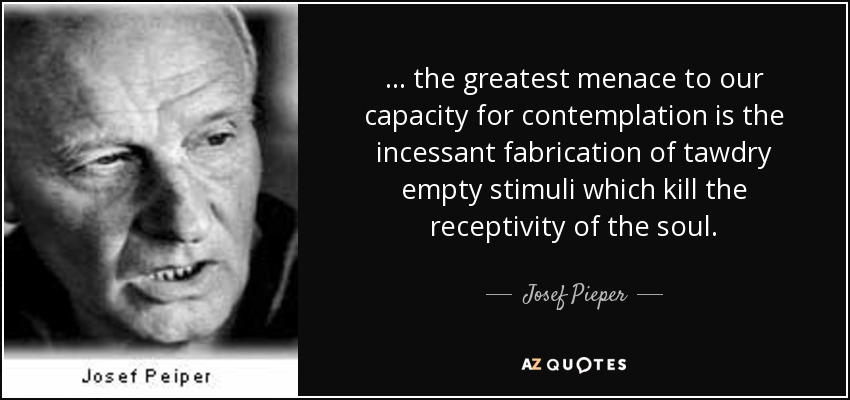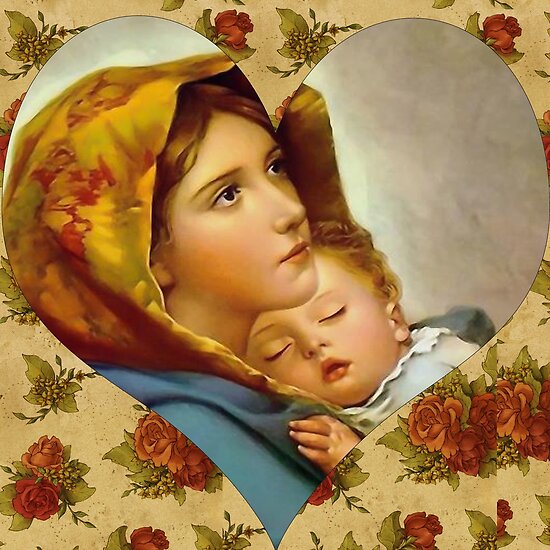“How can
the Church evangelise a generation of men and women whose contact with
nature
has often been disfigured by technology and trapped within an urban environment
full of
traffic, buildings, noise, artificial light and so on? How can they (we) come
to knowledge of God if they have a diminished exposure to the nature God
created?”
David Collits
Pope Francis has, at a General Audience, called for us to trust
in God the Father: https://www.vaticannews.va/en/pope/news/2019-01/pope-francis-audience-trust-our-father.html
By Vatican News
Pope Francis began his
catechesis by saying how St. Matthew’s Gospel strategically places the text of
the Our Father “at the centre of the Sermon on the Mount, which begins with the
Beatitudes”. This location is significant because it condenses the fundamental
aspects of Jesus’ message, he said.
The Beatitudes
In the Beatitudes, Jesus
awards the gift of happiness to categories of people who in His time, and our
own, “were not very highly regarded”, said the Pope: “the poor, the meek, the
merciful, the humble of heart”. The peacemakers who, until then, were on the
margins of history, become “builders of the Kingdom of God”. It is from here,
said Pope Francis, that “the newness of the Gospel emerges”. The Law is not to
be abolished, but requires a new interpretation, finding its fulfilment in the
Gospel of love and reconciliation. “The Gospel challenges us”, said the Pope,
“the Gospel is revolutionary”.
Love has no boundaries
This is the “great secret”
behind the Sermon on the Mount, continued Pope Francis: “Be children of your
Father who is in Heaven”. God asks us to invoke Him with the name of “Father”,
to let ourselves be renewed by His power, “to reflect a ray of His goodness for
a world thirsting for good news”. As sons and daughters, brothers and sisters
of our Heavenly Father, Jesus invites us to love our enemies, because “love has
no boundaries”.
Beware the prayer of the
hypocrites
Before giving us the “Our
Father”, said Pope Francis, Jesus warns us of two obstacles to prayer. He does
so by distancing Himself from two groups of His time: the hypocrites and the
pagans. We do not pray in order to be “admired by others”, said the Pope.
Rather than just an outward show without inward conversion, Christian prayer
has “no credible witness other that its own conscience”. It is a continuous
“dialogue with Father”.
Beware the prayer of the
pagans
The second group is that of
the pagans, who pray with formality and wordiness, presenting their petitions
without a spirit of quiet openness to God’s will. Pope Francis suggested that
silent prayer is often enough, placing oneself “under the gaze of God,
remembering His love as a Father”. Jesus tells us to pray like children to a
Father “who knows what we need before we even ask”.
God needs nothing
“It is beautiful to think that
our God does not need sacrifices to win His favour”, concluded Pope Francis.
“Our God needs nothing: in prayer He asks only that we keep open a channel of
communication with Him so we can recognize we are always His beloved children.
Because He loves us so much”.
Theology tutor David
Collits writes sensibly on reality and the metaphysics of being:
Opening up to
being – learning to trust ourselves again
An
air of unreality pervades current day discourse. Focus on identity rights,
same-sex ‘marriage’, unisex bathrooms, safe spaces, the mendaciously called
‘Safe Schools’ and so on bespeaks not only a divorce from tradition and custom,
but more fundamentally a divorce from reality itself. Something unreal persists
in political agitation for a panoply of rights not rooted in human nature or
the cosmos itself, and which in fact denies the existence of human nature as
such.
Such
campaigning is based upon the liberal conceit constitutive of modernity that
meaning and identity flows from an ever-expanding assertion of the will and not
who we are as human beings. On this view, there is no human nature: I choose,
therefore I am. This disconnection from reality is not confined to political
issues but permeates our technology-saturated culture. Restoring contact with
the real is vital for our culture to convey authentic meaning, as well as how
we form our children, use technology and even how we worship.
A helpful
restorative is offered in the recently published John Senior and the Restoration of Realism,
by Benedictine monk Fr Francis Bethel (Thomas More College Press, 2016).
Bethel’s subject is the life, and more especially the philosophy and
educational approach of relatively little known American professor, John Senior
(1923-1999) (Dr Stephen McInerney has previously written of him for The
Catholic Weekly).
Senior
made his biggest impact at the University of Kansas in the 1970s. There, he and
two colleagues founded the Integrated Humanities Program, whose key notion was
to expose students to the poetic (conceived broadly) riches of Western
civilisation as a way to engage their sensory and imaginative faculties, and so
enable them to encounter being.
From this Program came many fruits, including over 200 student conversions to Catholicism (Bethel was one such student convert). Senior did not set out to convert students; they arose from contact with the real embodied in the great Western literary, philosophical and theological tradition. But convert and embrace vocations Senior’s students did. Bishops, religious superiors, seminary directors, judges, lawyers and teachers number among former students.
From this Program came many fruits, including over 200 student conversions to Catholicism (Bethel was one such student convert). Senior did not set out to convert students; they arose from contact with the real embodied in the great Western literary, philosophical and theological tradition. But convert and embrace vocations Senior’s students did. Bishops, religious superiors, seminary directors, judges, lawyers and teachers number among former students.
Two of
Senior’s principal published works were Death of Christian Culture (1978) and Restoration of Christian Culture (1983):
short and punchy but with philosophical heft, these are transgressive of so
many contemporary shibboleths as to be exhilarating. While one need not agree
with all of Senior’s positions, it is hoped that Bethel’s work might contribute
to greater knowledge and utilisation of his ideas in forming our own children
and restoring the culture. The culture we are giving them will, the way things
are going, be in much need of restoration.
Arguably
Senior’s greatest insight is his premise that the further we are from an
unmediated experience of reality, the further we are from God. It is not
possible even to think of God philosophically or theologically if one has not
first been exposed to the creation that God has put in front of us.
We come
to know Being itself through exposure to created being. “The world is charged
with the grandeur of God,” so wrote Gerard Manley Hopkins.
God,
transcendent but immanent to creation, is revealed in the beauty and order of
the natural realm perceived in the senses and apprehended in the mind. Key for
Senior, and any common-sense realist perception of reality, is the
Aristotelian-Thomistic insight that, precisely because we are body-soul beings,
truth is known to our minds because it is first known to our senses.
Catholicism
is not a gnostic religion or philosophy in which knowledge is mediated directly
to the mind apart from ‘evil’ matter. Knowledge of God comes first through
sensory perception. It is not for nothing that Christ uses parables and lessons
based on everyday contact with the earth: the mustard seed and the big tree it
becomes, employment in the vineyard, the lilies of the field, the fig tree, the
pearl, the field, and so on. Man’s first home was a Garden. The Prince of the
Apostles’ occupation was to fish. The Church’s liturgy and sacraments,
especially Baptism and the Eucharist, incorporate and elevate basic human and
earthly realities: flowing water, bread and wine, oil. Authentic culture arises
from liturgical cult fostered on humus, work with the soil that humbles
us and can yet be offered to God. Genuine education grows around liturgical
cult and is fostered by immersion in the Western canon, whose own roots are in
that liturgical culture.
Centuries
of rapid technological development, and decades of material wealth and relative
peace in the West have inured generations of people to the vicissitudes and
hardships that have been the common lot of humanity. Underappreciated perhaps
is the negative effect that this material wealth has on the capacity for us to
perceive created being and through that God himself. Especially is this acute
in the case of the millennial generation, about which much has been written,
from issues of housing affordability to its members’ apparent sense of
entitlement and ‘flakiness’. How can the Church evangelise a generation of men
and women whose contact with nature has often been disfigured by technology and
trapped within an urban environment full of traffic, buildings, noise,
artificial light and so on? How can they (we) come to knowledge of God if they
have a diminished exposure to the nature God created? Nor is this issue limited
to those born after 1980 or so: in the 1960s, Senior was struck even then by
the failure of his students to recognise reference in classical literature being
made to the primordial stuff of human existence.
Ours is a
technological age predicated, as Bethel persuasively sets out in the book’s
first part, on the Modernist idea that reality itself is to be rejected and
replaced with artificial constructions of our own, not simply technological but
philosophical and ethical as well. The eclipse of religion, gender ideology,
and the deconstruction of marriage and the family in the West are the end
result of centuries of philosophical and cultural unrealism.
Senior argued trenchantly and in many respects attractively in Restoration of Christian Culture that culture can only be restored when technology, especially electronic, is eradicated from the home so that human fellowship and imagination can breathe again around hearth and piano. Bethel judiciously queries the limits of Senior’s rhetoric, pointing out that technology provides undoubted benefits and its development is part of the self-actualisation of the human race about which Pope Benedict XVI spoke in Caritas in Veritate.
Senior argued trenchantly and in many respects attractively in Restoration of Christian Culture that culture can only be restored when technology, especially electronic, is eradicated from the home so that human fellowship and imagination can breathe again around hearth and piano. Bethel judiciously queries the limits of Senior’s rhetoric, pointing out that technology provides undoubted benefits and its development is part of the self-actualisation of the human race about which Pope Benedict XVI spoke in Caritas in Veritate.
While it
might not be necessary to adopt all of the strictures of Senior’s approach, our
use of technology does need to be critiqued. Senior’s point that television
screens provide a barrier to the perception of reality, deadening the senses
and the imagination, has become even more urgent in its implications.
(One
wonders what he would think of the ubiquity of computers, including those we
carry in our pockets.) Professionals rarely can escape the clutches of email.
Many have commented on the stultifying, anti-social nature of smartphone use –
those poor children at restaurants and cafes who, instead of being initiated
into the rites of communal eating, drinking and conversation, are pacified with
screens!
One can
only lament the fetishisation of technology in education: integral to reading
and writing are the use not only of mind but the senses. Writing is a physical
as well as mental act, and writing with pen and paper is more tangible and
embodied than typing. And not just sight, but touch, smell and hearing are
engaged: I still remember the smell of the copy of The Hobbit given me
when I was nine years old.
Senior’s
vision finds some resonance with contemporary ‘romantic’ Catholic critiques of
the worship of technology and the totalitarian impulses of modernity, from
Roman Gaurdini’s Letters from Lake Como, JRR Tolkien’s Hobbit and
Lord of the Rings to Pope Francis’s Laudato Si’. It also relates
broadly to Rod Dreher’s new book, The Benedict Option, a call for
Christians to form smaller, counter-cultural and more consciously devout
communities animated by Christian principles.
The
reference to St Benedict is striking. Senior’s vision of the restoration of
Christian culture revolves around the Benedictine monastery. Although this
might inappropriately privilege only one of the charisms God has given in the
Church’s history as being universally applicable across time, the Benedictine ora
et labora has much to tell technocratic culture: the rhythm of life
balanced between work and prayer, and prayer through work. St Benedict’s papal
namesake, Pope Benedict XVI, in an address to the German Bundestag called for
reason to be “open to the language of being” and implored us to fling open the
windows again to “see the wide world, the sky and the earth once more and learn
to make proper use of all this”.
A
formative thinker for Ratzinger was Josef Pieper, who argued that the human
person has an orientation to being, and is fulfilled in union with the God who
is the sheer act of the real itself. Ultimately, Senior’s value as a teacher
comes from his rediscovery that such an orientation to being needs to be fed on
contact with the real given us in creation – the sky and the earth – a contact
that will give way to the eternal vision of Reality itself.





